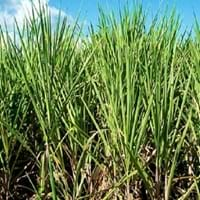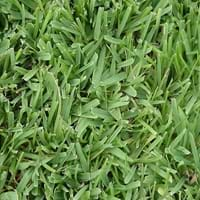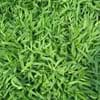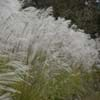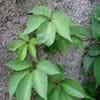Life Span
Perennial
Perennial
Origin
Southeastern Asia, Melanesia, Micronesia
World/Pandemic
Types
Not Available
Not Available
Number of Varieties
Not Available
Habitat
agricultural areas, Wet lands
Subtropical climates, Tropical regions
USDA Hardiness Zone
10-15
8-10
AHS Heat Zone
12 - 9
Not Available
Sunset Zone
H1, H2, 8, 9, 20, 21, 22, 23, 24
H2, 17, 24
Habit
Clump-Forming
Mat-forming
Minimum Width
Not Available
Flower Color
White hair and some brown spots on margins and at tips
Green, White
Flower Color Modifier
Bicolor
Bicolor
Fruit Color
Not Available
Non Fruiting Plant
Leaf Color in Spring
Green
Green
Leaf Color in Summer
Light Green
Light Green
Leaf Color in Fall
Green
Green
Leaf Color in Winter
Green
Green
Leaf Shape
Acicular
Lance shaped
Plant Season
Summer, Fall
Spring, Summer, Fall, Winter
Sunlight
Full Sun
Full Sun, Partial Sun
Growth Rate
Very Fast
Medium
Type of Soil
Clay, Loam, Sand
Clay, Loam, Sand
The pH of Soil
Acidic, Neutral, Alkaline
Neutral, Alkaline
Soil Drainage
Average
Average
Bloom Time
Early Summer, Summer, Late Summer, Early Fall
Spring, Late Spring, Early Summer, Summer, Late Summer
Tolerances
Wet Site, Drought
Pollution, Salt, Soil Compaction
Where to Plant?
Ground
Ground
How to Plant?
Seedlings, Stem Cutting
Sprigging or Stolonizing
Plant Maintenance
High
Medium
Watering Requirements
Water Deeply
Needs more water during establishment
In Summer
Lots of watering
Lots of watering
In Spring
Moderate
Moderate
In Winter
Average Water
Average Water
Soil pH
Acidic, Neutral, Alkaline
Neutral, Alkaline
Soil Type
Clay, Loam, Sand
Clay, Loam, Sand
Soil Drainage Capacity
Average
Average
Sun Exposure
Full Sun
Full Sun, Partial Sun
Pruning
Prune ocassionally, Remove dead branches, Remove Ferns
Remove damaged leaves, Remove dead branches, Remove dead leaves
Fertilizers
Equal amount of N,P,K, fertilize in growing season
organic fertlizers
Pests and Diseases
Beetles, Fusarium root rot, Head smut
Dollar spot, Leaf spot
Plant Tolerance
Heat Tolerance, Shade areas
Drought
Flowers
Showy
Insignificant
Flower Petal Number
Single
Single
Foliage Texture
Coarse
Fine
Foliage Sheen
Matte
Matte
Attracts
Butterflies, Rats, Squirrels
Billbugs, Crickets, Cutworms
Allergy
Diabetes, Sleepiness
Not Available
Aesthetic Uses
Not Used For Aesthetic Purpose
Ground Cover
Beauty Benefits
Maintains teeth healthy, Making cosmetics
Not Available
Environmental Uses
Food for animals, Food for birds
Erosion control
Medicinal Uses
Aging, Antidepressant, Aphrodisiac, Appetite enhancer, Diuretic, Fatigue, Muscle Pain, Nutrients
No Medicinal Use
Part of Plant Used
Leaf Stalks, Leaves, Stem
Not Available
Other Uses
Animal Feed, Biomass for fuel, Can be made into a herbal tea, Food for animals, Sometimes used for making wine
Used as a golf course turf, Used to feed livestock
Used As Indoor Plant
No
No
Used As Outdoor Plant
Yes
Yes
Garden Design
Dried Flower/Everlasting, Edible, Feature Plant, Tropical
Lawns and Turf
Botanical Name
SACCHARUM officinarum
PASPALUM vaginatum
Common Name
Sugarcane
Biscuit Grass, Seashore Paspalum
In Hindi
गन्ना
Seashore Paspalum
In German
Saccharum
Seashore Paspalum
In French
Canne à sucre
Seashore Paspalum
In Spanish
Saccharum
Paspalum
In Greek
Saccharum
Αιγιαλός Paspalum
In Portuguese
Cana-de-açúcar
seashore Paspalum
In Polish
Saccharum
Nad morzem Paspalum
In Latin
Saccharum
Paspalum maris
Phylum
Magnoliophyta
Magnoliophyta
Class
Liliopsida
Lilopsida
Order
Cyperales
Cyperales
Clade
Commelinids, Monocots
Angiosperms, Commelinids, Monocots
Tribe
Andropogoneae
Paniceae
Subfamily
Panicoideae
Panicoideae
Number of Species
Not Available
Season and Care of Sugarcane and Seashore Paspalum
Season and care of Sugarcane and Seashore Paspalum is important to know. While considering everything about Sugarcane and Seashore Paspalum Care, growing season is an essential factor. Sugarcane season is Summer and Fall and Seashore Paspalum season is Summer and Fall. The type of soil for Sugarcane is Clay, Loam, Sand and for Seashore Paspalum is Clay, Loam, Sand while the PH of soil for Sugarcane is Acidic, Neutral, Alkaline and for Seashore Paspalum is Neutral, Alkaline.
Sugarcane and Seashore Paspalum Physical Information
Sugarcane and Seashore Paspalum physical information is very important for comparison. Sugarcane height is 30.00 cm and width 180.00 cm whereas Seashore Paspalum height is 2.50 cm and width Not Available. The color specification of Sugarcane and Seashore Paspalum are as follows:
Sugarcane flower color: White hair and some brown spots on margins and at tips
Sugarcane leaf color: Green
Seashore Paspalum flower color: Green and White
- Seashore Paspalum leaf color: Green
Care of Sugarcane and Seashore Paspalum
Care of Sugarcane and Seashore Paspalum include pruning, fertilizers, watering etc. Sugarcane pruning is done Prune ocassionally, Remove dead branches and Remove Ferns and Seashore Paspalum pruning is done Remove damaged leaves, Remove dead branches and Remove dead leaves. In summer Sugarcane needs Lots of watering and in winter, it needs Average Water. Whereas, in summer Seashore Paspalum needs Lots of watering and in winter, it needs Average Water.
